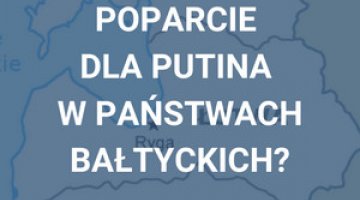Latvia’s new armour: Finnish vehicles for the Latvian Armed Forces
On 29 October, the Latvian Armed Forces received the first four Patria 6x6 wheeled armoured personnel carriers (APC) as part of the Latvian-Finnish agreements on cooperation in the production and acquisition of these vehicles signed in August 2021. Latvia ordered more than 200 APCs for its Land Forces and territorial defence forces (the National Guard), while Finland announced the procurement of 160 units in 2023. The Patria 6x6 APC is a new version of the classic Finnish armoured vehicles from the Patria XA family. It is an easy-to-operate light modular vehicle for use in various types of missions. The programme involves significant participation from Latvian industry, which will manufacture doors and hatches, among other things. Five Latvian companies have been subcontracted by Patria, one of which will be responsible for maintenance, repairs and logistics. So far, Latvian companies have received €250,000 worth of orders under the programme. €1.5 million has also been invested in production capacity and infrastructure, as the APCs will be assembled in Latvia from 2023.
Commentary
- For Latvia, this is its largest military modernisation programme since the restoration of its independence. The new APCs will significantly strengthen the Land Forces’ capabilities. Assembling them in the country makes the programme unique among the Baltic states, which are known for acquiring military equipment either 'second-hand' or 'off-the-shelf'. For Riga, the financial aspects played a crucial role in the selection of the supplier. An affordable unit price (the total value of the contract is approximately €200 million) and spreading out the deliveries (from 2021–2029), so as not to overburden the defence budget (€699 million, i.e. 2.27% of GDP in 2021), were important factors. This will make it possible, for instance, to carry out another expensive investment – the purchase of four Black Hawk helicopters for €175 million. Unlike Lithuania and Estonia, Latvia has not decided to acquire infantry fighting vehicles (IFV). In their major land forces modernisation programmes, Vilnius and Tallinn procured 88 new Boxer IFVs for €385.6 million (2016) and 44 second-hand CV90 IFVs for €113 million (2014), respectively.
- Finland has managed to 'reclaim' the Latvian market and gain the status of the main partner in the modernisation of Latvia’s Land Forces. Initially, in 2018, Riga selected GTP 4x4 vehicles manufactured by Finland’s Sisu Auto in a €200 million tender. However, the Procurement Monitoring Bureau halted this acquisition. Eventually, Latvia changed the concept and opted for larger Patria 6x6 APCs. It is possible to integrate them with the AMOS mortar turret, which could bring further orders to the Finnish side in the future. Other countries could join the Finnish-Latvian project, as it is open to third parties. Estonia initially declared its participation in this programme, but eventually withdrew, preferring to invest in coastal defence. Unlike Latvia, it did not reach an agreement with Patria on the price of the vehicle and the involvement of Estonian industry. Tallinn plans to acquire new wheeled APCs in the second half of the decade. Returning to talks with Finland and Latvia will then be an option. Sweden is also considered to be a potential buyer.
- Patria, which is 50.1% state-owned (the remaining 49.9% is owned by Norway's Kongsberg), is also persistent in its efforts to expand sales of armoured vehicles in Central Europe. Finnish-developed platforms are already in use by the Land Forces of Poland (the Rosomak, based on the Patria AMV licence), Croatia and Slovenia.. The Patria AMV 8x8 reached the final stage of the tender in Bulgaria, but it was cancelled in March this year. It is also seeking a contract to supply APCs to Slovakia, announcing cooperation with the local defence industry if it wins.





